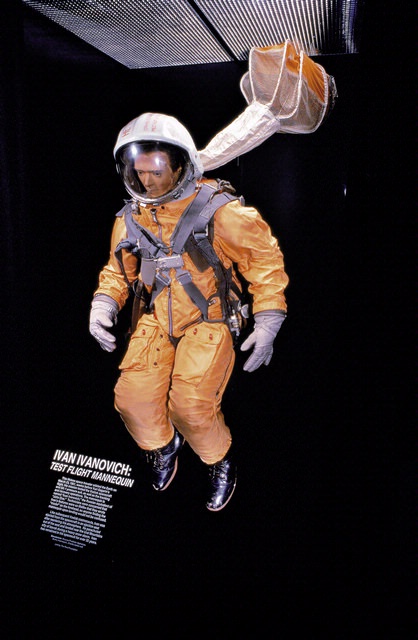Before a man could head into space, the Russians felt a mannequin needed to get there first.
It was on this day (March 9) in 1961 that Ivan Ivanovich — the mannequin, or space dummy — made his first flight in a Sputnik. He then took another turn in space later that month before being placed into storage for decades. United States businessman (and failed presidential candidate) Ross Perot bought him at auction in the 1990s, and lent him to the Smithsonian National Air and Space Museum. He’s on display there today.
Universe Today caught up with Cathleen Lewis, the museum’s curator of international space programs and spacesuits in the division of space history. She explained that the mannequin was actually designed and built by three organizations:
– Zvezda (aka JSC Zvezda and RD&PE Zvezda), a firm known for high-altitude suits and spacesuits;
– The Institute for Bio-Medical Problems, which performed aerospace medicine research;
– The Moscow Institute for Prosthetics, which built the mannequin using specifications from the first two groups.

Here are some of the lessons the Russians learned from Ivan Ivanovich’s flight, according to Lewis:
– What the environment is like inside the spacecraft. While the Soviets had already sent dogs and other animals into space in that time, Lewis said they were sent up in their own self-contained canisters. The chest cavity of Ivan included accelerator and angular rate changes to see what gravity changes he was experiencing. He also measured the level of radiation. Notably, Ivan actually went up twice before the first man in space (Yuri Gagarin), but the reasons are still unclear. “One assumes that because they did do it twice, they weren’t satisfied with the result the first time,” Lewis said. “But there were not a lot of modifications [between flights], so it might have been a testing failure or ambiguity in the results.”
– The communications network. During the early years of the space program, the Americans had a number of ground and ship stations scattered around the world. These stations allowed constant, but not completely continuous, contact with the astronauts. The Soviets had a much smaller network, and wanted to know exactly when the cosmonauts would be audible to ground control. The solution? Recorded singing. “They were broadcasting a song, a folk song from the spacecraft,” she said. The song had an unintended consequence: those listening in from other countries thought there was an actual cosmonaut on board, leading to rumors that other cosmonauts died before Gagarin’s flight, she said.
– Limited public outreach. In the closed Soviet society of the time, public broadcasts of missions generally happened after the fact. Engineers had to figure out how not to alarm the locals if Ivanovich ended up falling nearby a populated area and officials could not retrieve him first. They therefore wrote the word “mannequin” on Ivan to make sure people understood what was going on. It turned out the precaution was never needed, though. “He was more on target than Gagarin,” Lewis said.


The Six Million Ruble Man! You GO Ivan!